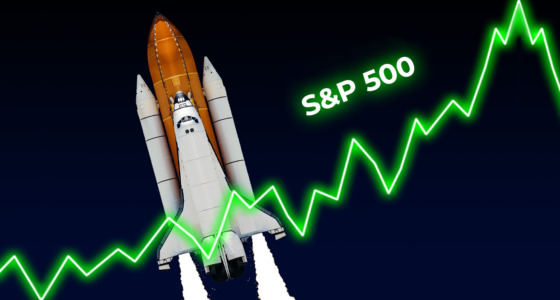

Let’s start this journey of trading enlightenment with one fundamental question: “What is divergence, and what can it tell us about price movements?”. It may sound surprising, but many traders often misinterpret this critical trading component.
This article will explore the exciting concept further and discover the secrets behind its effectiveness in trading.
What is Divergence?
Divergence is a trading technique experienced traders utilize to ascertain potential trend reversals in financial markets. It offers highly reliable trading signals that help traders gain insights into market dynamics and make well-informed decisions.
When combined with other essential trade analysis tools and strategies, divergence is a trustworthy method for evaluating the relationship between price movements and technical indicators.
Experts suggest that indicators and price actions often appear with delays. In the case of divergence, this characteristic also works to our advantage. It enhances the accuracy of identifying appropriate trade entry points. In addition to benefiting traders seeking reversals, it helps trend followers recognize the right trade exit points.
Divergence occurs when the asset price moves against a technical indicator. With its help, you can determine the momentum and get a reliable signal that the current price trend is weakening and a reversal is approaching.
Divergence appears when the price on a chart exhibits a higher high while the selected indicator marks a lower high. The difference between these two high points signals the happening of something unusual that needs to be given attention. So, divergence happens whenever a trading indicator disagrees with the prevalent price action.
Now that we have explained the basic concept, the next step is to delve more into the insights of divergence and how it can be used in trading for a more significant benefit.
What is an RSI Divergence?
One of the most popular indicators for trading is the RSI or Relative Strength Index. This numeral acts as a tool to measure the average gain or loss in trading over a specific period.
For example, setting the RSI at 15 will compare the strength of bullish and bearish candlestick charts within the last 15 candles. A low RSI value signals the prevalence of a stronger bearish trend (it means that there were more bearish candles than bullish ones), while a high value will herald the dominance of more bullish candles.
When does an RSI divergence form?
To interpret divergences accurately, traders need to understand the significance of the highs and lows of indicators. When analyzing the trends, the RSI enables you to assess the strength of individual waves. This assists in shedding light on the overall trend’s trade momentum.
To understand this in a better way, let’s have a look at the given three scenarios in the images.
#1. First scenario
With a strong bullish trend, the RSI will incline with higher highs. It will signify a more significant presence of bullish candles in the most recent wave than in the previous one.
#2. Second scenario
When the RSI reaches similar highs during the upward trend, it will indicate an unchanged momentum. It can’t be concurred as a divergence because the strength of the upward trend remains steady.
The higher highs of the RSI do not depict a reversal or trend weakness. It only indicates the continuation of the prevalent upward trend.
#3. Third scenario
A real divergence emerges when the price forms a higher high during a trending bullish wave, and the RSI exhibits a lower high. It signifies that the recent bullish candles were weaker than the prior price action. Hence, it indicates a loss of price momentum.
The divergence here acts as a signal, highlighting the potential end of an upward trend and predicting the start of a downward trend.
Why Isn’t Traditional Technical Analysis Perfect?
A traditional technical analysis advocates that a trend persists when the price achieves higher highs. This oversimplified slant often fails to seize the actual dynamics of the market. If you rely solely on highs and lows for price analysis, you will overlook critical signs and fail to comprehend the intricate workings of market forces.
A trend may appear healthy on the surface with its higher highs and higher lows, but a deeper evaluation of the candles and their motion shows a loss of momentum. Identifying a divergence on this momentum indicator helps indicate that the trend is shifting. Despite showing an outward presence, the trend may be near its end.
How to Trade Divergence?
Divergence doesn’t always guarantee a substantial reversal. The price may often enter a phase where sideway consolidation occurs, followed by divergence. Therefore, in this and similar scenarios, the divergence signifies a loss of momentum rather than a complete shift in the predominant trend.
One should incorporate additional benchmarks and validation tools into the trading arsenal to keep you from entering any misleading trends or directions that have no results. Relying only on divergence for trading signals may lead to unfavorable or unsuccessful outcomes.
For a solid trading strategy, it is highly recommended that multiple confluence factors be included to strengthen the trading process. Looking at the chart below, you can see two instances in which the price exhibits divergence without subsequent sell-offs. Here the divergence only indicates short-term consolidation stages.
This shows the importance of complementing the divergences with other relevant indicators and tools to boost the reliability of your trading approach.

Location Matters – A Trading Tip for Positive Results
In the realm of trading, location is an element of paramount importance. It doesn’t matter which trading approach you opt for. Incorporating the filter of location can consistently and effectively improve the quality of your trades and signals.
Complementing the divergence signals with location, and you can undertake a more prudent approach to trading. This involves waiting for the price to move into a previous support or resistance zone. Within this context, you can actively look for divergences and trend shifts to time entries.
A convincing example is presented in the screenshot below.
On the left side, one can see an uptrend with two divergences. However, the outcome varied. Upon examining the higher time frame on the right, one can notice that the first divergence occurred in an insignificant area. In contrast, the second divergence materialized at a crucial resistance level (indicated by the yellow line and arrow).
So, it is important to identify support/resistance zones and allow the price to approach these zones. Adopting such an approach can greatly impact your overall performance.
Divergence has remarkable trading potential. Understanding this concept and using accurate signals within the appropriate market context can foster a robust trade methodology and a powerful lens to interpret price action.
The bottom line
As you can see, divergence and other market signals and indicators are vital in successful trading decisions. It may not be the sole factor of decision-making, but it can be an excellent starting point to augment your trading opportunities. However, it is important to realize that divergence doesn’t give a guaranteed signal to enter/exit a trade; these data also need to be confirmed by other technical analysis tools also need to confirm these data.








